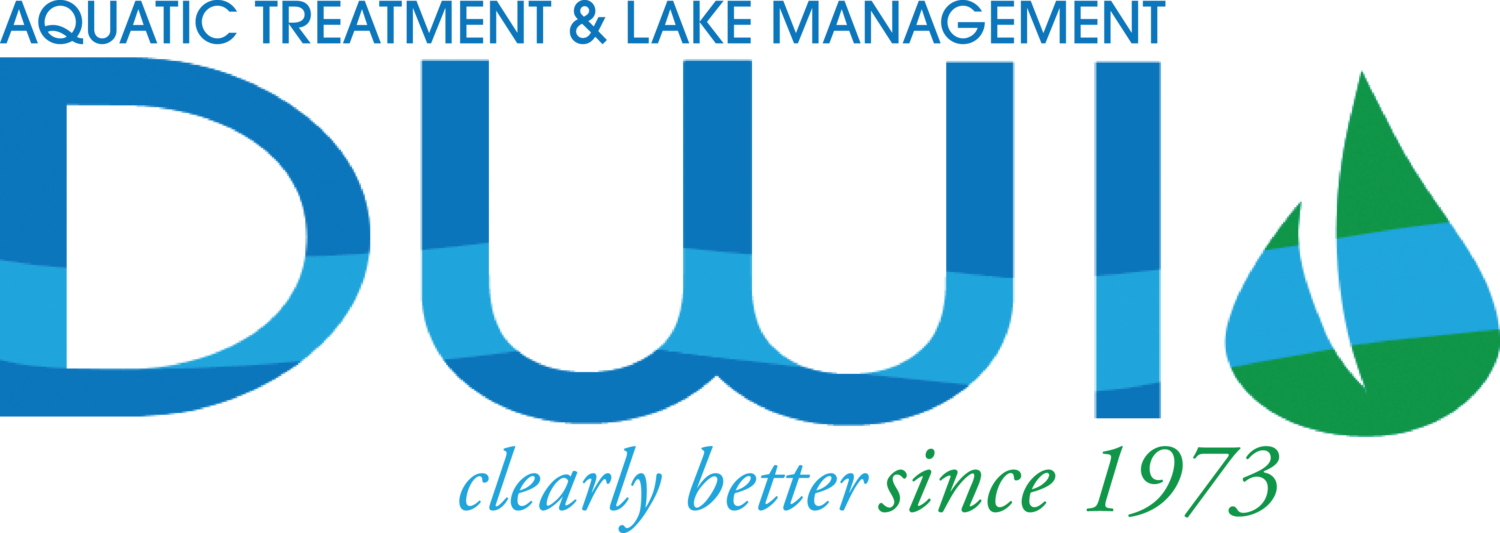by Patrick Simmsgeiger, Founder of DWI
Is there a green nasty monster lurking in what used to be your lovely water feature? That monster in your water feature need not to be such a pain. Any Golf Course Superintendent can tell you just how quickly the green monster can grow and become your biggest nightmare. Specialized lake and pond maintenance to prevent this monster may not seem necessary until you are overwhelmed with an unsightly green mess or the terrible stench that can be a result of neglect or poorly managed water health. Let’s face it; you don’t want your clients avoiding a feature attraction because it has become a lurking nasty monster.
Who is this lurking green smelly monster? Typically it is algae and aquatic weeds. Something as simple as your grass cutting methods may have innocently created that monster in your pond or water feature. All your efforts to keep your greenery and turf beautiful have a ripple effect inside your water feature. Those chemicals and fertilizers are feeding those green monsters algae and aquatic growth. Tree trimmings and leaves may seem to be an unsightly annoyance to be easily skimmed off the top of your water feature, however once there – they have already given that monster a wonderful snack.
How can you eliminate algae in your pond or lake? This is where it can seem complicated. An aquatic problem can’t be fixed by making one change or by using some instant fix-all solution. Over-watering, runoff, grass clippings and positioning of trees will simply guarantee the monster will rear its ugly head once again without ongoing proper care for prevention. Using the wrong chemicals can either kill everything which is rarely a good idea, or using the wrong product can be a waste of time and money. That is when you need an aquatic expert to help you restore balance and maintain your feature attraction, protecting your investment and preventing that monster from haunting your establishment again.
Time to get Technical
Biological contamination of all types of water features (including lakes and ponds) is cyclical, meaning it is a recurring event or simply put—will happen again without proper care. Biological contamination is the natural reaction to all those grass clippings, leaves, fertilizers and runoff which breathes life into algae and aquatic weeds becoming that smelly green monster.
Since this is a force that must be dealt with on different levels, our main focus is to create and then maintain a balance. It can be tempting to depend upon a single solution but be aware that this tactic can simply cause another problem, and then another.
A customized approach is best to use; one that focuses on prevention and slows down the occurrence of biological contamination and the many other issues that may be present. Stagnant water creates health issues as it is a breeding ground for mosquitoes that in turn breeds concern about the West Nile Virus. By manipulating the pH (acidity and alkalinity) we make sure additives block contaminants and our next line of defense is in circulation and filtration. Design also plays a huge part in overall success. A water feature’s depth, shape and surrounding plant life has an important impact on how easily that green monster can rear its ugly head and how we fight it.
Use the Correct Weapon for the Problem
Circulation and Filtration are often the weak point in a solution. Keeping the filter systems clean and in working order is important. A big issue with filtration, circulation and aerators is the fact that ideally they should be on all the time but because of energy conservation that often does not occur. We typically suggest they run at least twelve hours each day. Even an excellent aerator properly placed has its limitations. Almost every problem is affected by proper circulation, filtration and aeration.
Here are a few common issues that all water features typically face:
Clarity:
This problem can be caused by many things. Silt-small particles floating in the water, some forms of algae, dead organic matter, clay mud or dirt to name a few.
Solution:
Flocculent/Clarifiers latch onto floating or suspended contaminants like magnets, then group them together making them collectively heavier and then they fall to the bottom where aerators, filters and circulation step into action. Good bacteria can be purchased that will enhance water quality, clarity and digest some of the bottom sludge.
Algae:
Nutrients and conditions which are always present create the world which algae blossoms within any water feature. They are unavoidable but they can be controlled. It is important to note that often there is life which we want to encourage such as fish and some plant life. Proper concern about products which will simply kill everything—typically undesirable—should be avoided in favor of a safer product for the environment.
Solution:
Again circulation, filtration and aeration are concerns, and then application of the proper product to control/eradicate algae is the next step. Enzymes can also be used to boost algae control but only after making sure that there is no compatibility issues.
Foam:
Unsightly foam is usually caused by soaps and dead organic matter.
Solution:
Defoamers are very effective and application depends upon the amount of foam. Chlorine reduces the effectiveness of defoamers.
Color:
Yes, everyone wants that fabulous water feature to be beautiful—and proper dyes can help create that image.
Solution:
Water dyes act like sun block, which decrease the amount of light which would helps algae to grow. Used properly these dyes are not a threat to fish, waterfowl, other living organisms or humans. While dyes are not necessary, they can assist you in making your water feature a beautiful attraction.
Call a Professional
An aquatic professional’s specialty is to maintain the delicate balance between natural aquatic organisms and your valuable water features. All bodies of water, ponds or other water features, should be an attraction enjoyed by your clientele. nature demands the daily skill of a knowledgeable professional to maintain lakes, ponds, and streams by attempting to preserve and maintain that delicate balance. Let us assist you in accomplishing that goal. Don’t wait for that green smelly monster to arrive, but if you do–Call a professional!



